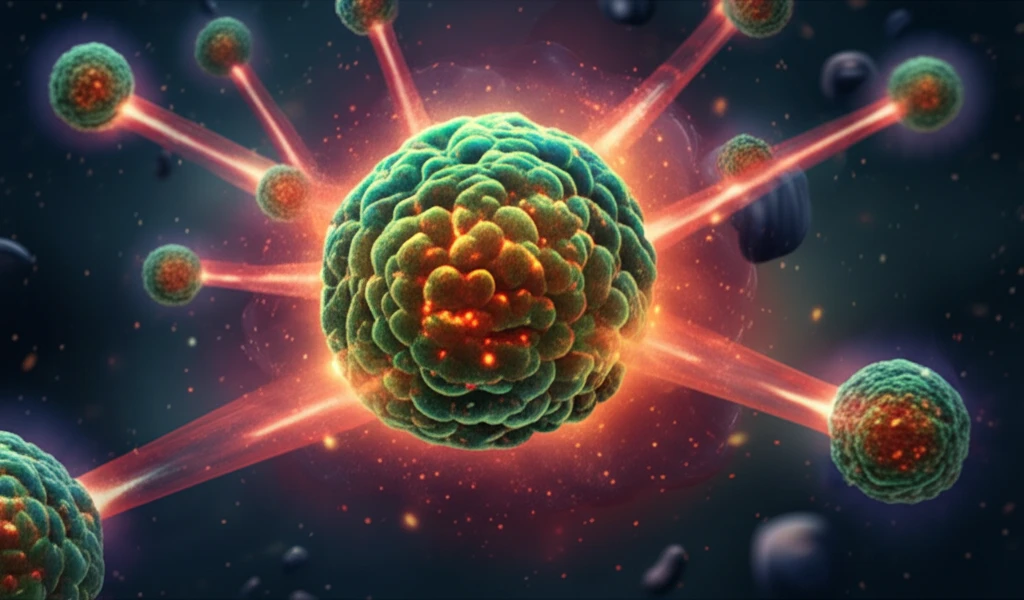
Nanocages: The Future of Cancer Treatment?
"Explore how glycol chitosan-coated gold nanocages are revolutionizing glioblastoma phototherapy, offering new hope for brain cancer treatment."
Photodynamic therapy (PDT) has emerged as a clinically approved strategy for cancer treatment. However, its effectiveness is often hampered by the limited water solubility of photosensitizers (PS) and their short wavelength absorption, which restricts deep tissue penetration. Overcoming these limitations is crucial for expanding the applications of PDT, particularly in challenging cancers like glioblastoma.
Glioblastoma, an aggressive type of brain tumor, poses significant challenges due to its infiltrative growth and resistance to conventional treatments. Complete surgical removal is difficult, and the prognosis remains poor despite aggressive multimodal therapies. Researchers are constantly exploring new approaches to improve treatment outcomes and extend patient survival.
Recent advancements in nanotechnology offer promising solutions for enhancing PDT. One such advancement involves the use of gold nanocages (AuNCs) to encapsulate and deliver near-infrared (NIR) photosensitizers. These nanocages not only protect the PS from premature release but also improve their biocompatibility and water solubility, paving the way for more effective and targeted cancer therapy.
Glycol Chitosan-Coated Nanocages: A Breakthrough in Glioblastoma Phototherapy

A groundbreaking study led by Gantumur Battogtokh and colleagues has introduced an innovative approach to glioblastoma phototherapy. Published in Nanomedicine: Nanotechnology, Biology, and Medicine, the research details the development of glycol chitosan-coated gold nanocages designed to encapsulate a near-infrared photosensitizer (SiNC). This novel formulation aims to enhance the delivery and effectiveness of PDT for brain cancer treatment.
- Enhanced Biocompatibility: Glycol chitosan coating improves the biocompatibility of the nanocages, reducing toxicity and enhancing their ability to interact with biological systems.
- Controlled Release: The cleavable peptide linkage allows for the release of SiNC at the tumor site in response to specific enzymes, maximizing its therapeutic effect.
- Improved Water Solubility: Encapsulation in gold nanocages enhances the water solubility of the hydrophobic photosensitizer, facilitating its delivery and uptake by cancer cells.
- Neutral Surface Charge: The resulting particles exhibit a neutral surface charge, which promotes better dispersion and reduces aggregation in biological environments.
Future Directions and Implications
This research underscores the potential of polymer-coated SiNC-AuNCs as a promising agent for brain cancer phototherapy. Further studies are needed to optimize the formulation, investigate its long-term effects, and evaluate its clinical translatability. The development of targeted nanocarriers like these could revolutionize cancer treatment by improving drug delivery, reducing side effects, and enhancing therapeutic outcomes for patients with glioblastoma and other challenging cancers.
